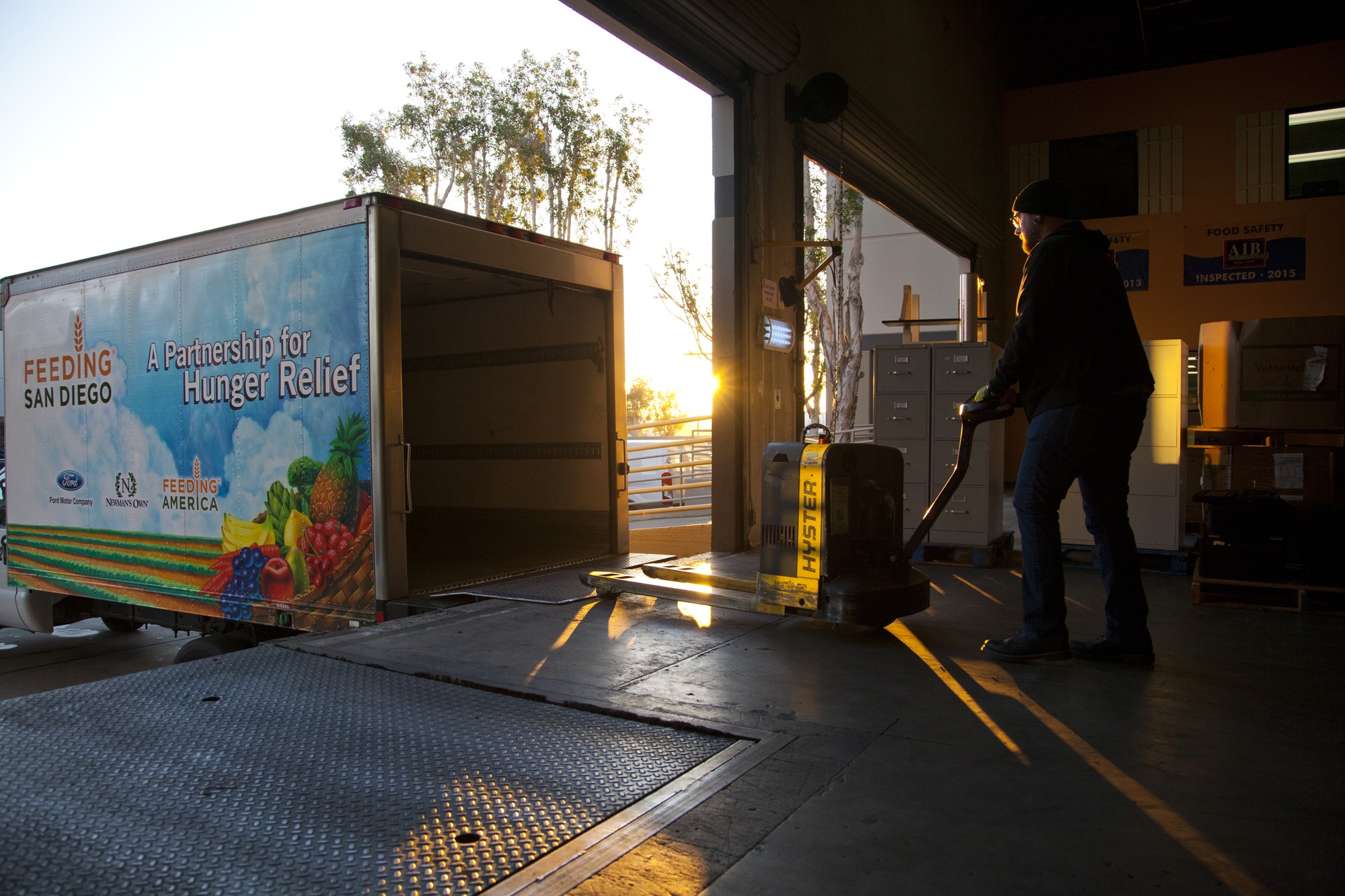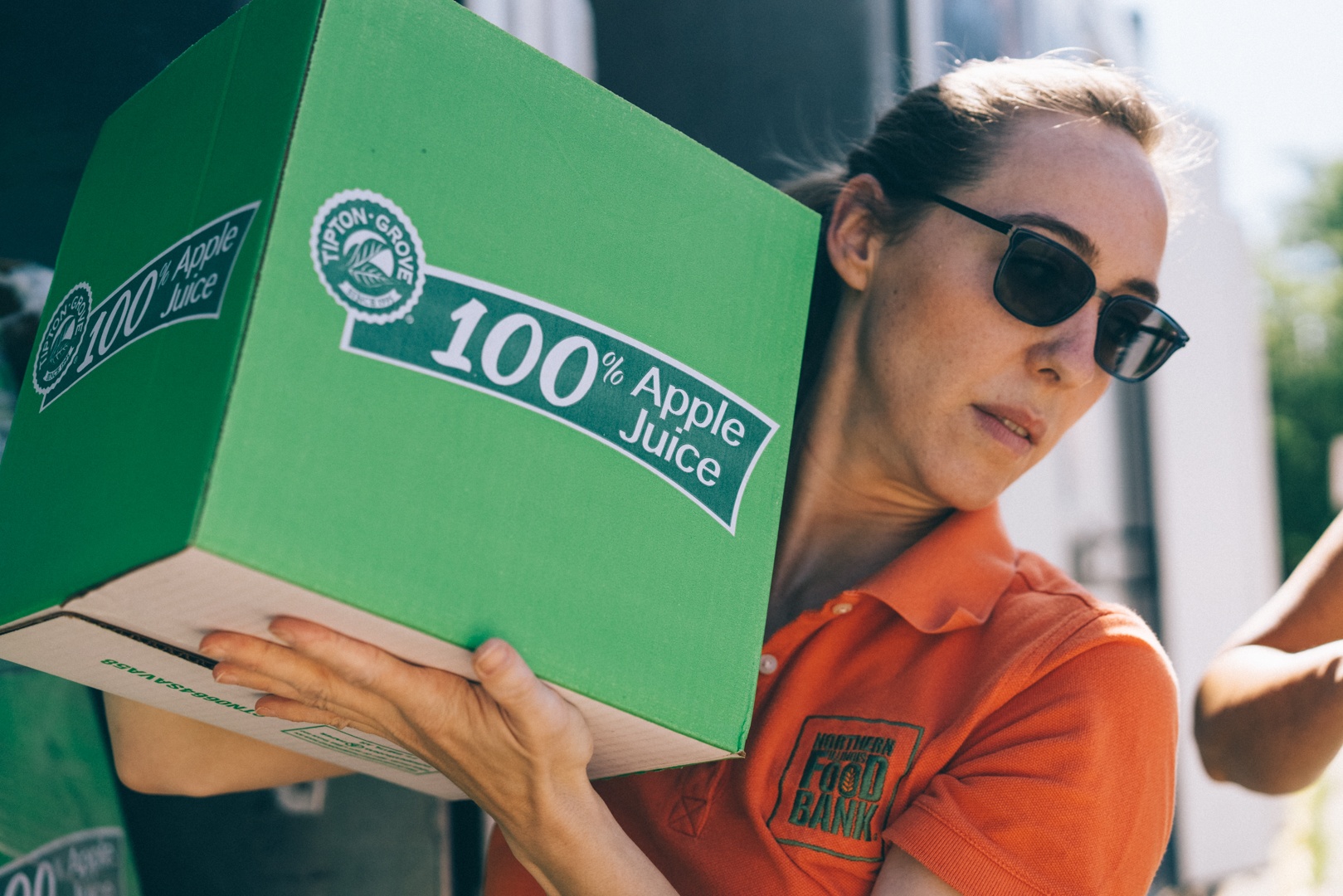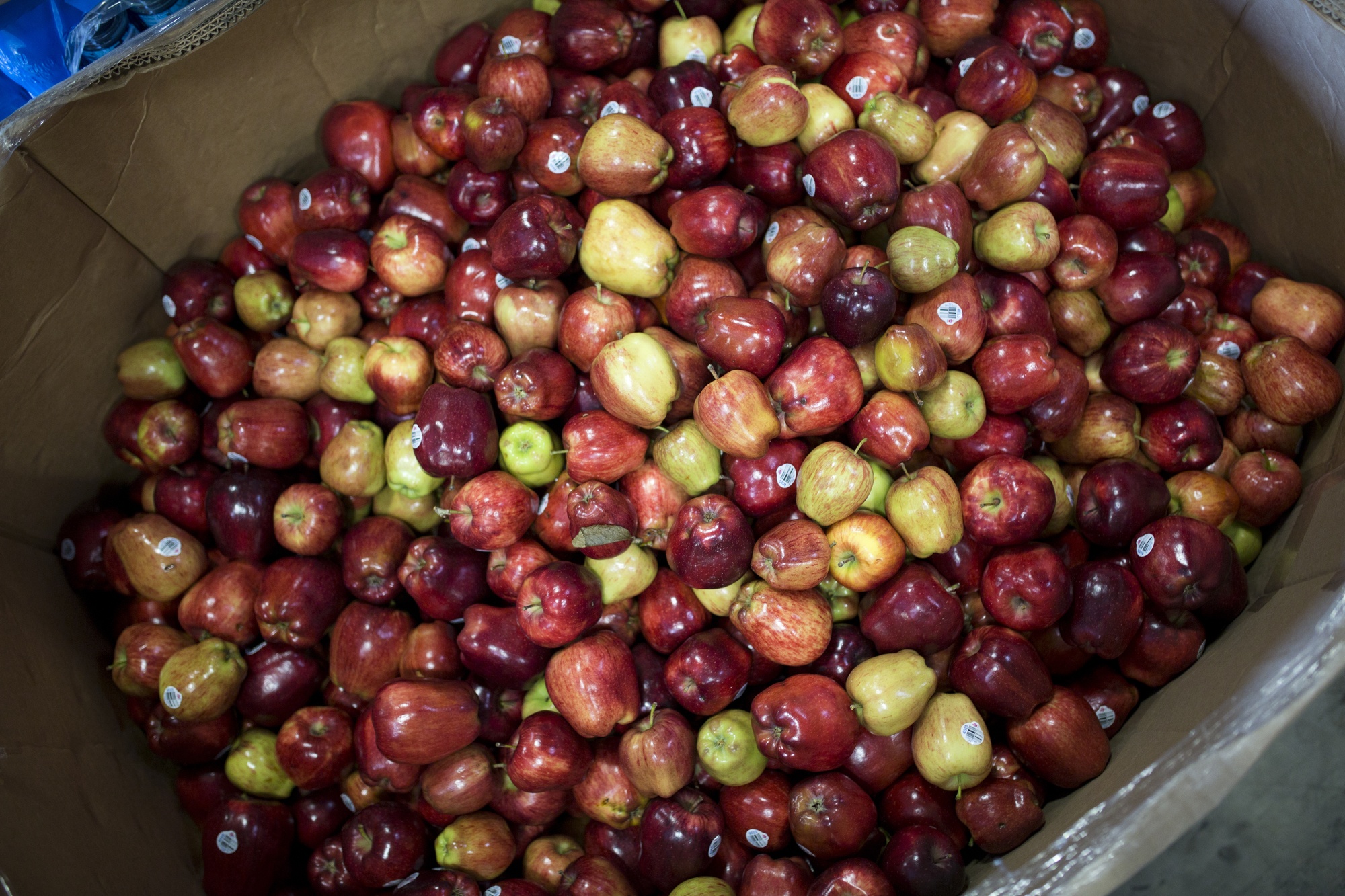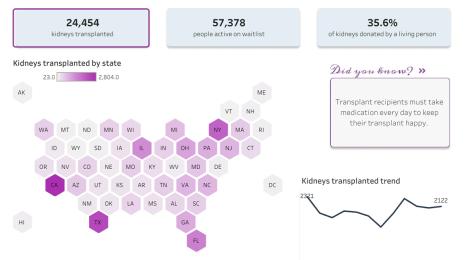How a new approach to data is powering Feeding America’s fight against hunger
Tackling hunger in America is no small task. More than 37 million people in the U.S. struggle to put food on the table —that’s one in nine people. As you walk down the street, you probably pass someone who is facing hunger.
Feeding America® is the largest domestic hunger-relief organization in the United States. Through a network of 200 independently run member food banks and 60,000 food pantries and meal programs, they helped provide 4.2 billion meals last year, and reach more than 40 million people each year. But oftentimes their work, says Stephanie Zidek, Feeding America’s director of data and analytics, feels like traversing an ever-changing landscape.
“Food banks need to know how much they’re able to distribute in a particular area,” Zidek says, but there are still so many questions that their distribution data alone can’t answer. What are the needs of the community and how might they be evolving? When are people most in need of food and is the food bank meeting them where they are? What types of food are people seeking out and is distribution matching that?

The answers to many of these questions, Zidek says, can be found through data. But to address them, the Feeding America network needs to pair data it already has with new sources of data that it must start collecting —and they need to be able to analyze and ask questions of it in a timely manner. By analyzing timely data, the Feeding America network will be able to draw insights more quickly and drive decisions and action to more effectively serve people facing hunger.
Tableau Foundation is excited to grow its partnership with Feeding America to support their plan to integrate data into everything they do—and especially, how they serve communities. With a new grant of software and financial support, Tableau Foundation will support Feeding America’s ability to analyze transactional data from food banks’ inventory management systems, part of a new process to bring this data together in a centralized repository, starting with 25 food banks. This initiative, Zidek says, will enable Feeding America and member food banks to ask and answer new, more detailed, and timely questions about their data.
Getting to this point has been something of a journey for both Feeding America and Tableau Foundation. The partnership began in 2015—right at the beginning of Tableau Foundation’s grantmaking existence—and since then, we both have learned a lot about the use of data, and about funding transformative change.

Big aspirations, big challenges
At the time when Feeding America first partnered with the Tableau Foundation, “there was a growing interest in consistently reporting data and key performance indicators (KPIs) across the network of food banks,” Zidek says. To support them in this effort, Tableau Foundation connected Feeding America to what was, at the time, the largest-ever deployment of Tableau Online, and to 15 data fellows who would work with Feeding America member food banks to build data capacity. “Our idea was that the fellows would build dashboards and processes that were useful for the Feeding America network, and that they would serve as a library of expertise for food banks who wanted to use data for decision-making in the future,” says Jason Schumacher, Tableau Foundation’s head of U.S. grantmaking.
Tableau Foundation’s ultimate vision was that the data fellows would be able to build universally useful tools for the Feeding America network, and that its data capacity would increase across the board as a result. That was a steeper goal than the Foundation initially realized. “When we were thinking about the data fellowship program, we did not fully recognize the differences among the food banks in the Feeding America network,” Schumacher says. Some of these differences are demographic: The Feeding America network spans everything from Food Bank For New York City, which serves a massive metropolitan area, to Mountaineer Food Bank, which serves rural communities in West Virginia. But there are also technical differences, as the member food banks use a wide range of different inventory systems and vary significantly in their capacity to conduct reporting and data analysis.
“We wanted food banks to be able to benchmark their performance to relevant peers for their purposes,” Zidek says. “Some wanted to benchmark to peer food banks who they were like currently, and others wanted to benchmark to food banks who they aspired to be like in the future.” Feeding America and several member food banks determined a set of KPIs that indicated successful food bank performance and built a centralized dashboard they used to benchmark their progress. But ultimately, the utility of the dashboard was limited.

Reckoning with what went wrong
As Tableau Foundation and Feeding America continued their partnership, they realized part of the issue was that most of the data used in the dashboard was updated quarterly or annually. “When you’re thinking about data for decision making, annual data just never works,” Schumacher says. The data was relevant to connect food banks for peer learning opportunities on a high level but to make impactful decisions, more timely data is required.
This first grant that Tableau Foundation designed was decentralized. “We had this vision of a brilliant scenario where we’d influence 200 food banks—and all of the food pantries they work with across the country—through a single grant, built around the idea of knowledge trickling down from the data fellows,” Schumacher says. “But to make change across an organization as large as Feeding America, we have to really put in the hard work at the center of the organization. And we weren’t able to provide the right support at the time.”
From learning to new opportunity
The renewed grant to Feeding America incorporates those learnings and takes a new approach. Tableau Foundation will be working more closely with the national office to support their internal data capacity and structure. Feeding America’s national office will be taking a leadership role in supporting the food banks’ use of data. “The power of centralizing our data assets will ensure that we maximize the opportunity to make meaningful, data-driven decisions,” says Maryann Byrdak, chief information officer at Feeding America.
With support from the Tableau Foundation, Feeding America’s national office will build a set of foundational reports that are commonly used across the network, freeing capacity of analysts at food banks so they can spend more time diving into deeper insights and less time building and maintaining reports. The national office will also be able to provide food banks with new visibility to network trends on more granular and more timely data.
For food banks, the benefits of collecting and analyzing daily data range are many. For example, this new approach to data will improve the ability of the national Feeding America office to identify ways it can support the food banks in terms of sourcing and distributing food as well as building capacity. “We believe it will help food banks make decisions or see data in a different way,” Zidek says. “It could show them where they might need to look for another partner agency, or where there might be a gap between the number of people in a particular area and how much they’re able to distribute there.” By building out the data reporting system within Feeding America’s national office and connecting the member food banks to it, Feeding America can ensure that all the food banks in their network have equal access to support and are working within the same framework to track their metrics.

What’s also promising for Feeding America is how this new effort around data use will help them better understand the people they serve. In addition to analyzing real-time data about their inventory, food banks will work to collect more demographic data about the people they serve. The way the Feeding America network previously collected information about the people it serves was through an anonymous quadrennial study. “It was very detailed and we collected great information from it, but it was time intensive and resource intensive and we were only able to do it every four years,” Zidek says. “Now we’re working to support food banks by implementing a platform to securely collect data about people being served at the time they receive their services—collecting demographic information, but also details like what time people visit pantries, what their dietary needs are, and if they might be eligible for benefits like SNAP so food banks can refer them to other supporting resources – all while ensuring the privacy of the data of the people being served.”
“Data-driven decision making will help us maximize our effectiveness and the generosity of our donors to work to end hunger,” says Byrdak. With partners like Tableau Foundation, Feeding America can get closer to reaching this goal.








